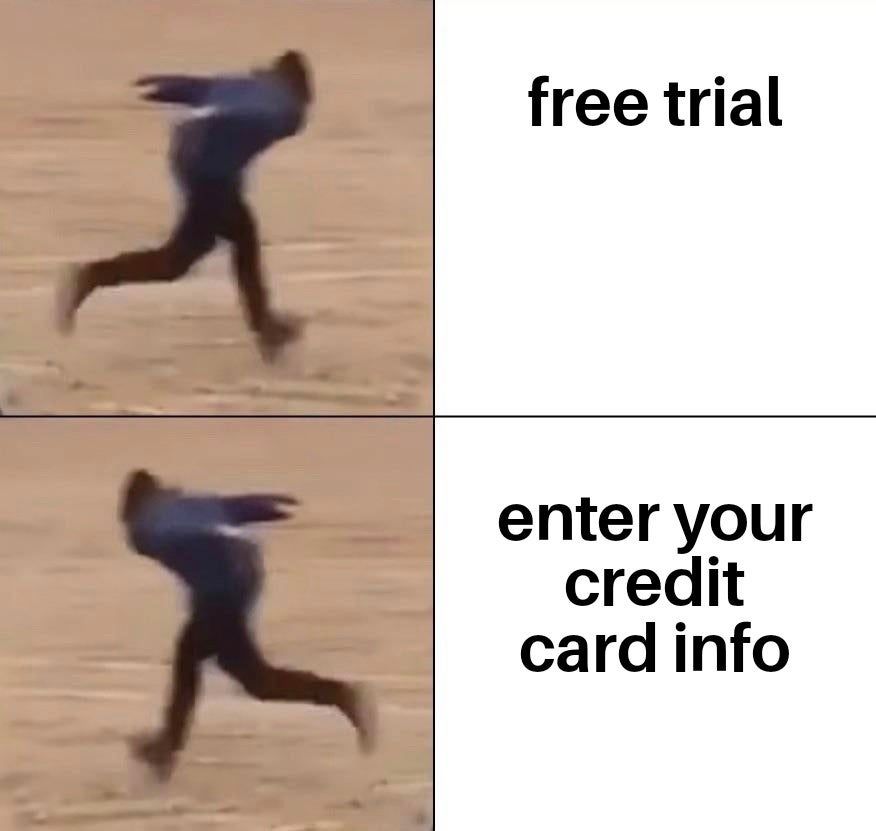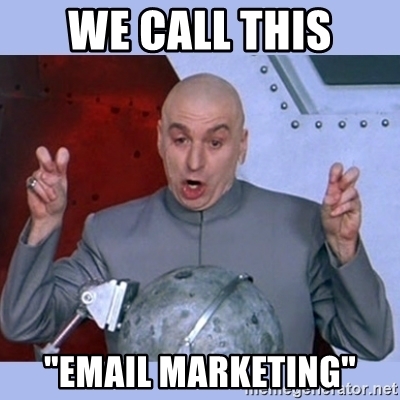Customer feedback is King.
I’ve learned that through trial and error and founding and growing three SaaS companies. The companies that collect customer feedback and use it to build better products do better. They find product market fit, they convert more, and they churn less.
As a customer feedback enthusiast, I was excited to sit down and talk to Moritz Dausinger.
Moritz is a serial SaaS founder based out of Paris, France. He is currently working on his fourth startup Refiner.io. Before Refiner, Moritz bootstrapped two other B2B SaaS companies from zero to acquisition and worked as the CTO of a high-growth venture-backed startup.
Refiner is a customer survey platform built for modern SaaS companies. It lets you track customer success metrics (NPS, CSAT, or CES), research what to build next, or profile new trial users with fully customizable in-app survey widgets. Then, you can use those insights to increase conversions and better retain your customers.
Refiner’s tools make it for SaaS companies to get quick customer feedback and turn it into insights—which they need to do if they want to grow.

I asked Moritz to have a conversation with me more about how Refiner works, the tools they use, and their strategies for boosting trial-to-paid conversions. Here’s our conversation (edited for clarity).
About Refiner
Kareem: Hi Moritz, thank you for chatting with me today. Can you tell me a little bit about Refiner?
Moritz: Refiner is a customer survey tool for SaaS companies. Our customers are SaaS startups with traction or who are scaling-up. They are looking to survey their customer base and ask questions about customer satisfaction. Or, they might want to ask questions related to product development—for example, they might be doing some kind of feature research.
So the promise of Refiner in a sentence is: We are the best possible service solution for SaaS companies that want to measure customer satisfaction or do product research.
With that said, our target market is definitely teams. We’re not going after the little indie hacker or the super young startup that is just getting started.
Target Customers and Conversion Approach
Our customers are tech-savvy. They are sometimes marketers or sometimes product people, but, in general, they’re pretty comfortable with self-service in the beginning—they want to try out the solution and have a look at it. And of course, they usually work in a SaaS company, so they’re software people.
Our goal was always to open up Refiner to everybody who wants to test it. So we don’t require a credit card up front and we don’t ask many questions. You can create an account in one minute. We want you to check out the software as easily as possible.

The majority of our customers are fine with the whole idea of self-service, but we do have some bigger customers who would like a more high-touch experience. And so one of our biggest challenges is actually to offer those two lanes at the same time. We make it so that the people who want self-service can find their joy and go all the way into the product. And then we also take a more high-touch enterprise sales approach for the customers that are looking for that.
We can come back to that later how we do that, but that’s basically the approach: we’re primarily self-service with a more high-touch lane.
Plans
We offer monthly and annual plans as well as an Enterprise plan for bigger accounts.
Company Stage
Our company started two years ago and I’d say we’re in the traction stage.
We have a nice product-market fit, and now it’s really about acquisition: getting the customer acquisition engine running better. We have really high stickiness and very high satisfaction. We have close to 100 paying customers right now, so it’s all about accelerating.
The “Aha!” Moment for Refiner Trial Users
Kareem: You mentioned you’re in the traction stage. What’s your product’s “Aha!” moment? And how did you figure that out?
Moritz: To be honest, it’s a difficult concept to put into hard facts. It’s more of a feeling we have.
But for Refiner, the main “Aha!” moment is when you create your first survey and you realize that it’s both a very easy solution to set up, and it’s also very powerful in terms of options. You can ask really any kind of question. And it’s made for the type of user that you are—a SaaS company.
And so that’s basically it: we want you to experience how easy it is to create a survey. During onboarding, we ask you what kind of survey you want to build and you choose a template. Then you can manipulate and modify the questions. So you experience how easy it is to actually create a survey. That’s the first “Aha!” moment.
The second one is when you realize you can actually embed Refiner—and the data you get from it—into your data flow. We have a lot of integrations and so you can basically set up Refiner in such a way that you can put your survey data into your data warehouse or leverage your customer data stack in real-time. And that’s when you realize that Refiner was built for SaaS companies. It’s completely different from other survey solutions where you would maybe download a CSV or Excel file.
So we have those two “Aha!” moments. We focus on the first one during the onboarding, and we make sure that, with follow-up emails, we also point people to the second one.
Kareem: That’s great. Actually, that’s one thing that’s not often talked about: there are multiple “Aha!” moments along the journey.
There’s usually the one that really drives trial-to-paid conversion. But then there’s sort of a secondary moment that really increases retention and can potentially increase expansion revenue, depending on your model. There are other bits of extended or deeper value you can get throughout the customer journey.
Moritz: I definitely agree with you on that.

Deciding on Onboarding Flow Steps
Kareem: So what’s the process you used to decide on the current steps in your onboarding flow?
Moritz: To be honest, it was pretty much based on gut feeling. We wanted to showcase what’s possible, but we also want you to get into the app as quickly as possible.
So, for example, when you create a survey inside Refiner, you have many options. That’s really one of the advantages of Refiner—you can customize your survey, you can translate it, you can style it, you can move questions around—whatever you want to do. But we didn’t include that in the onboarding—at least not all of those options. We just thought it was too overwhelming. We decided we really just wanted to give you a glimpse of what’s possible.
What we wanted was for our users to land in the application and have something built which they can then improve even further. So we limited the onboarding to three steps:
- Choose a template
- Modify the survey questions
- And then we show you how you would install it on your app
And even though we know that most people are not ready to install the survey on their app, we still think there’s value in showing that you would have to do it later and that this is how our solution works: at some point, you would need to install our JavaScript client.
So the basic approach was to make that as fast as possible, but still try to give each main aspect of Refiner center stage in the three steps.
And then once you finish those three steps, we have a kind of slideshow where the team greets the user, basically saying, “congratulations, you just created your first survey!” And then it talks a bit about the different sections of the app.
So we first let the user actually do something, and then we educate them a little bit. The user can skip that part, but we wanted to make sure there’s also some information about the next steps going forward.
We also give them an option to invite a colleague to join their survey. And we actually see a lot of people inviting a colleague at that point. And this is also a very important moment for us—when they invite other people to the app.
Kareem: I’ve never heard anybody say, “We include this step even though it’s unlikely that people will do it because we want to let them know that it’s a step that they will take at some point.” I think that’s really interesting.
How do you prompt people or remind them that, if they don’t install the widget, they should do it later?
Moritz: We have a checklist in the app. It’s hidden in the settings if you’ve completed it. But if you haven’t completed the checklist, it’s an icon located in the bottom left. And that checklist shows you every big step you need to take to have your setup ready: creating a survey, getting your first responses, inviting a colleague, setting up an alert, building a segment—all the stuff you would usually like to do to get the most out of Refiner.
When it comes to installing the widget, we can see if a new user didn’t receive any survey responses. If you didn’t install the app, you wouldn’t receive any survey responses. So we send a first, generic email explaining the steps to install the widget.

And then if people still aren’t receiving survey responses, our team would reach out to see how we can help. This is a very, very important step for us because Refiner is mostly used by non-programmers, but you need a programmer to install it. So we don’t want to bombard you with five emails, urging you to install it, but we want to know how we can help you to make it happen.
Kareem: Right. And how effective is that email at helping people get over the hump to install the widget?
Moritz: Well, we have two emails, and both are highly effective.
There’s the first one asking if you need help to install the widget. And there’s a second one where we ask if you need more time on your free trial. Those two have very high response rates. They are really short—they’re basically just a team member reaching out.
The extension of the free trial was something that we actually debated internally. Our trial is only 7 days long—it’s very short. But at the same time, you can still install it and check everything out. And we think that if somebody reaches out to get an extension on the trial, it’s actually a very good sign.
One of the biggest goals of these outreach emails is to get some kind of dialogue going. We want to talk with people. We know once we talk with them, they’re usually happy, we are happy, and there’s an exchange going on. The worst thing that can happen for us is that somebody signs up, doesn’t do anything in the app, and never shows any interest.
Kareem: Yeah, that’s a very common thing. I often see that the early-stage founders who’ve been around the block a couple of times, like you, understand that. To get product-market fit, you need to learn. And the way to learn is to really get the dialogue going. It’s the most effective way to understand what your customers’ objections are—what the friction is—so that you can remove them for the next signups.
Refiner’s Conversion Toolkit
Moritz, what are the key tools you use to measure and improve your trial to paid conversion?
Moritz: So this might come as a surprise, but we do a lot of internal SQL exports, Excel files, that kind of stuff. We basically just look at how many people completed what. This is one of the biggest next steps for us—to really make it a measurable process.

I’ve been looking into June. It’s a new tool, also from France. Basically, the promise is that you plug Segment in and get a bunch of product analysis. So that’s the analytics part.
And then another tool that I would like to test is actually made by a friend of mine. It’s called Sherlock Score. The idea is that you can set up user behaviour triggers to identify people who are ready to upgrade, people who might be qualifying for an Enterprise deal, or just other people that would be worth talking to. It would allow you to do a kind of lead scoring on the trial users, based on their behaviour.
Kareem: Basically helping you identify product qualified leads so you can find the people who are ready to upgrade or are ready to buy the enterprise plan.
Moritz: Exactly.
Kareem: Awesome. And do you use any kind of screen recording software right now? Like FullStory or similar?
Moritz: No.
Kareem: And what about tools to send out emails? Is that done in-app?
Moritz: I’m a huge fan of Customer.io. I’ve been using it for nearly 10 years. It’s a great product and I really like the flexibility. You can scale from early days to, basically, infinity. So we use their tool to send out drip campaigns, newsletters, and product announcements.
And we also have a couple of Slack alerts installed. For example, if somebody invites more than two team members, or if it’s a team of three, we get an alert because that’s a signal for us that this is an interesting account.
Kareem: And then do you reach out manually, or is it mostly just awareness?
Moritz: We would reach out. One of my colleagues would ask them if they needed any help, or if they would like to hop on a call.
Successful Strategies for Improving Trial-to-Paid Conversion
Kareem: What are the sort of two to three most impactful things you’ve done to improve trial-to-paid conversion?
Moritz: I would say that getting the email campaigns right has been really crucial.
We don’t send uninteresting stuff just to send an email, but, for example, we send an email really specific to the type of survey you want to build. So if you want to build an NPS survey, we’re going to make sure that you receive an email related to NPS surveys—why they are important and how you can use them. Getting that email nurturing right has been one of the most impactful things we’ve done.
And then iterating on the onboarding flow. Basically, we put ourselves in the shoes of a new user and tried to go into our product as naively as possible. We also asked friends to do the onboarding. We really wanted to get rid of our blindness because we are so into the product. So that’s been really impactful: seeing the product from the perspective of a new user and iterating on the onboarding flow.
(Editor’s Note: An outsider’s perspective on your onboarding can be extremely useful. If you’re looking for an onboarding audit, I can help)
Kareem: Do you use a tool to watch your friends do the onboarding? Or do they sit beside you?
Moritz: No, it was just a couple of friends of mine that did it and they recorded their screen. And then told us what they thought.
Kareem: Yeah. It’s amazing: Every time I think I have a feature done well and then I watch a user stumble over it…. I’m always humbled.
Inspiration from the SaaS Community
Last question Moritz: Who’s one person you follow online to learn more about improving your trial-to-paid conversion?
Moritz: I would just pretty randomly throw out the founder of June, Enzo Avigo. He’s maybe not really trial-to-paid, but he talks a lot about retention and other SaaS metrics. I think his work is really interesting.
The Big Takeaways
Here are the major takeaways that I took from my conversation with Moritz:
- Free trials can get the conversation going. They’re not just to show off your product. Refiner offers to extend free trials to users who ask for it, and they do this to begin a dialogue with a potential customer. Think about how you, too, can use trials as a way to start conversations with leads.
- Use simple metrics over none. Moritz admits that Refiner’s user analytics could be improved. But in place of advanced metrics, Refiner uses simple ones to alert themselves to opportunities: invites to more than two team members, teams of three or greater, and zero survey responses received. These are sufficient to draw Refiner’s attention to leads that require a higher-touch approach.
- Nurturing emails are key. Refiner has iterated on their email campaigns until they’re just right. They don’t send an email for the sake of it—they make sure those emails are contextual to what the user is trying to accomplish and add value.
- Onboarding is designed for naive users. The Refiner team has been careful to design their user onboarding flow for new users. They not only acknowledge their own blindness but actively recruit people that aren’t familiar with the product to engage with the onboarding process.

Thanks a lot, Moritz! Check him out on Twitter for more insights.
Refiner’s conversion strategy is slick, sweet, and effective. If you need help building a high-converting onboarding experience for your B2B SaaS, let’s talk.

